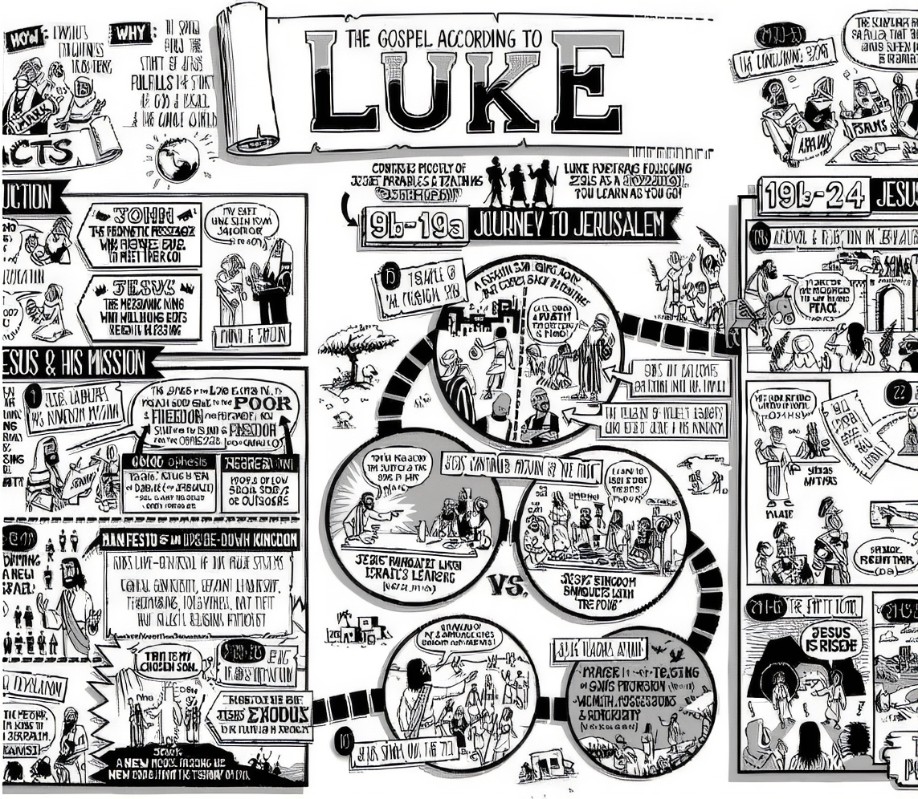
The Plot and Setting and the Significance of Interpretation
Written By Lesallan
Ohio Christian University
BIB3510 Gospels: Luke (ONLF23)
August 17, 2023
The Plot and Setting and the Significance of Interpretation
When reading Biblical narratives, paying attention to the plot and setting is crucial. This is because the plot and setting play a significant role in helping readers understand the story and its message. According to The Bible Project (2017), narratives typically involve characters undergoing a series of events in a setting. The way the author selects and arranges these events is known as the plot. The plotline usually starts with a character in a particular setting, but then something unexpected occurs, leading to problems and, ultimately, a resolved conflict. The character experiences a transformation and adapts to a new normal. When reading narratives, it is essential to comprehend each scene in the context of its larger plotline. Failing to do so can result in distorted interpretations of biblical stories.
The video “How To Read Setting in Biblical Narrative” (The Bible Project, 2017) by The Bible Project emphasizes the significance of settings in Biblical storytelling. Settings are a powerful tool authors use to stir up emotions and memories related to similar places in other stories. Authors who skillfully play with settings can build expectations and make a point. Readers can uncover more profound layers of meaning by paying attention to locations and times in Biblical stories. Therefore, understanding the plot and setting is essential for fully appreciating Biblical narratives.
The Bible Project videos “How To Read Plot in Biblical Narrative” (The Bible Project, 2017) and “How To Read Setting in Biblical Narrative” (The Bible Project, 2018) provide valuable insights into the general concepts of plot and setting in Biblical narratives. However, the account of the Transfiguration in Matthew 17:1-13 (KJV) is not explicitly mentioned in these videos.
The account of the Transfiguration in Matthew 17:1-13 (KJV) is a powerful moment in the Gospel narratives. Jesus, accompanied by Peter, James, and John, ascends a high mountain where He is transfigured before their eyes. His face shines like the sun, and His clothes become as white as light. Moses and Elijah also appear, talking with Jesus. This event marks a significant turning point as Jesus begins to prepare for the suffering and death that await Him in Jerusalem. It is a reminder that hope and light can be found even in the darkest times.
The significance of the plot is undeniable. Despite once being popular in the northern regions, Jesus eventually faced opposition from leaders who sought to discredit Him, leading many to turn away. Amid this, Jesus asked His disciples what people were saying of Him. The Transfiguration served as a confirmation of Peter’s confession of faith and provided a great source of encouragement for Christ as He faced the trials of Golgotha.
The setting and plot of this passage (Matthew 17:1-13, KJV) impact its interpretation by providing context for the events that take place. The high mountain setting evokes memories of other significant events in biblical history that took place on mountains, such as Moses receiving the Ten Commandments on Mount Sinai. The plot provides context for why this event was so significant for both Jesus and His disciples. It serves as a turning point in Jesus’ ministry and provides encouragement for what is to come. By understanding the significance of the plot and setting in this passage, readers can better appreciate its message.
Lesallan
References:
The Bible Project. (2018). Setting in Biblical Narrative. In YouTube. https://www.youtube.com/watch?v=7FuT8WtoAK0
The Bible Project. (2017). Plot In Biblical Narrative. In YouTube. https://www.youtube.com/watch?v=dLFCE8z__hw


